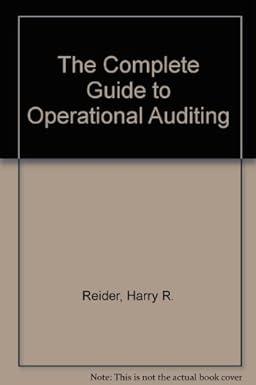Question
A new edition of a textbook is scheduled to be published a year from now. The publisher currently has 2000 copies of the current edition
A new edition of a textbook is scheduled to be published a year from now. The publisher currently has 2000 copies of the current edition on hand, and is deciding whether to do another printing before the new edition comes out. The publisher estimates that demand for the book during the next year is governed by the probability distribution shown below:
| Demand | Probability |
| 3000 | 0.20 |
| 4000 | 0.40 |
| 6000 | 0.10 |
| 8000 | 0.20 |
| 10000 | 0.10 |
A production run incurs a fixed cost of $10,000 plus a variable cost $15 per book printed. Books are sold for $130 per copy. Any demand that cannot be met incurs a penalty cost of $20 per book, due to the loss of goodwill. Up to 500 of any leftover books can be sold to a discount bookstore for $35 per book. The publisher is interested in maximizing expected profit. The following print run sizes are under consideration: 0 (no production run) to 16000 in increments of 2000. The publisher wants to determine the size of the print run through simulation. (That is, the publisher wants to determine how many copies of the current edition should be printed before the new edition comes out.)
Can this be detailed step by step?
Step by Step Solution
There are 3 Steps involved in it
Step: 1

Get Instant Access to Expert-Tailored Solutions
See step-by-step solutions with expert insights and AI powered tools for academic success
Step: 2

Step: 3

Ace Your Homework with AI
Get the answers you need in no time with our AI-driven, step-by-step assistance
Get Started


